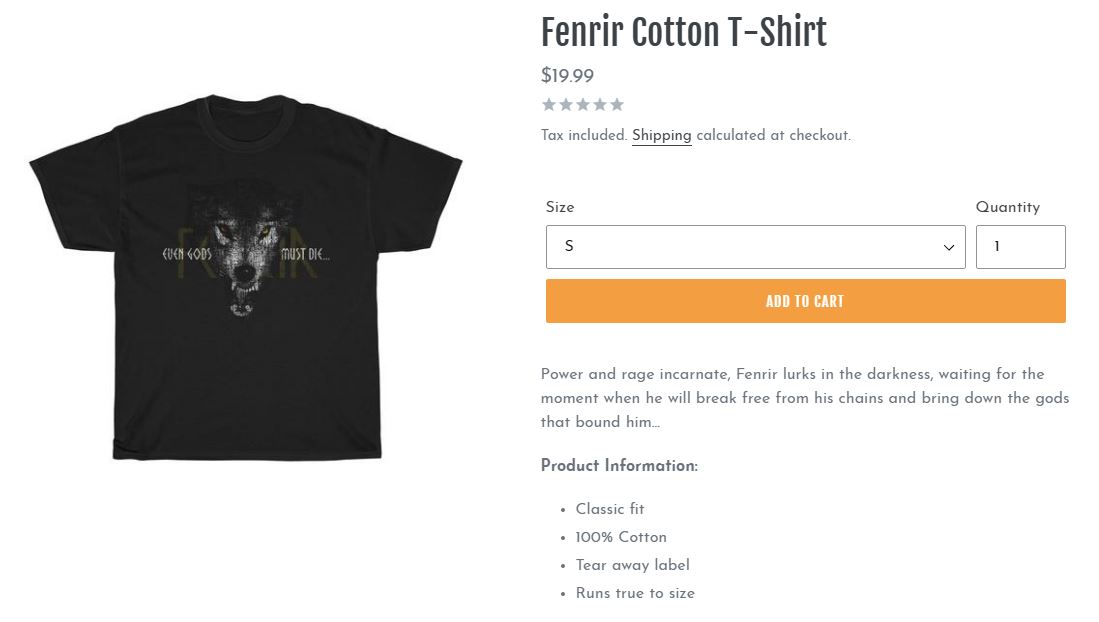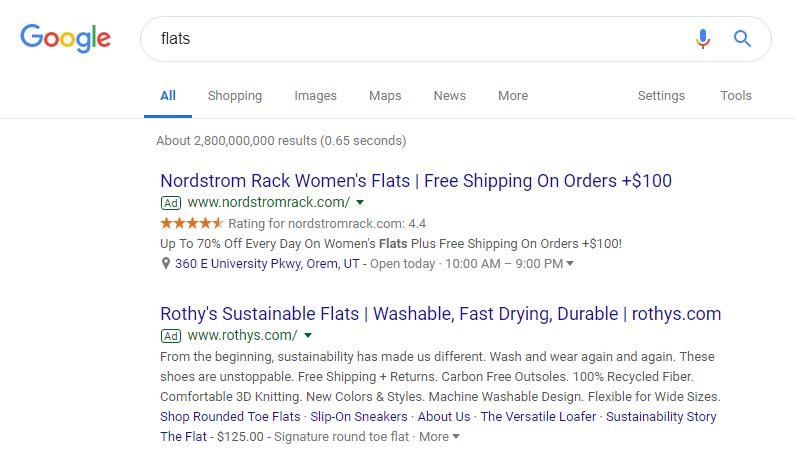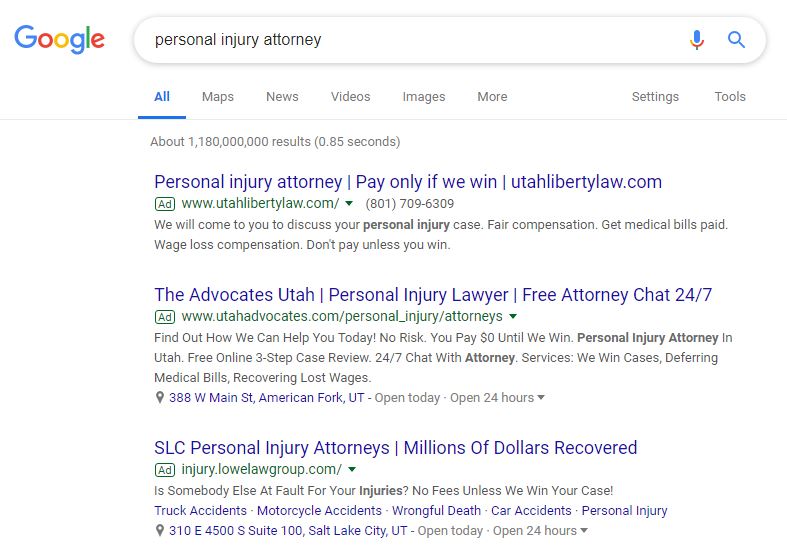How to Approach Your PPC Campaigns: Ecommerce vs Lead Generation
by Aden Andrus • May 16, 2019
When it comes to building and running a PPC campaign, it’s not hard to find great content that will help you learn the ropes. There are thousands of great articles, videos, eBooks and tutorials out there that you can use to figure things out.
A lot of it is here on Disruptive’s blog, but I’m sure there’s good stuff in other places, too. 😉
However, as you peruse the endless vaults of online insight, there’s one important factor that you need to keep in mind with every piece of article you consume: Are you advertising for an ecommerce or a lead gen business?
In the world of PPC advertising, the ecommerce vs lead gen question has a huge impact on which tactics, ideas and approaches will work for your business. Understanding how these business models differ from a PPC perspective is the key to figuring out which online advertising recommendations will work for your business…and which ones are just leading you down a rabbit hole.
In this article, we’re going to take a look at what differentiates ecommerce and lead gen from an advertising perspective. To keep things simple, we’ll use Google Ads as an example, but the concepts apply to a wide range of pay-per-click (PPC) platforms. Sound like a plan? Let’s get started!
Ecommerce vs Lead Generation Business Models
While this might seem obvious, the goal of an ecommerce campaign is to get someone to buy a product. The goal of a lead generation campaign is to get someone to give you their contact information so that you can reach out to them and try to convince them to buy something.
As simple as that seems, it’s actually a crucial difference from a marketing point of view. With ecommerce, you’re usually selling something relatively simple and specific. It might not be cheap, but it’s fairly easy for your customers to wrap their heads around.
For example, if you’re trying to sell a T-shirt, you don’t need to say a whole lot. It’s a T-shirt. People either want it or they don’t.

Image source: New World Viking.
Sure, there are some selling points like the design, the fabric choice or the price, but it’s still a T-shirt. You put it on and it keeps you from being naked.
In contrast, most lead gen businesses are selling a product or service that needs more explanation or specific input from a potential customer.
If you’re a plumber, you might need to evaluate the situation before you can give an estimate. If you’re selling software, you might need to do a demo to show off your involved features. If you’re an ad management agency like Disruptive—shameless plug here—you might need to learn more about someone’s business so that you can craft a custom proposal.
When what you are selling is self-contained and simple enough to explain on a page or two, your marketing follows an ecommerce model. This model is simple and focused on driving a sale as soon as possible.
When what you’re selling requires some sort of custom pricing or explanation, your marketing will need to follow a lead gen model. This model is focused on educating people and getting them to talk to you. It often takes longer to produce a sale, but the revenue for a sale is usually higher, too.
Ecommerce vs Lead Generation Marketing
Now that we’ve discussed what makes ecommerce and lead generation businesses different, let’s take a look at how that affects your marketing. As mentioned earlier, we’re going to focus on paid search marketing with Google Ads, but the underlying principles should apply to almost any marketing channel.
Targeting
Targeting is the heart and soul of any online advertising campaign. No matter how good your ads are, if you’re targeting the wrong audience, you won’t get the results you need.
At first blush, you might think that targeting works about the same for ecommerce and lead generation businesses. And, to a certain degree, you’d be right. Both ecommerce and lead generation businesses have the same targeting options at their disposal, so there is definitely some crossover.
However, the way you approach ecommerce vs lead generation targeting is different in some fundamental ways. Let’s take a look.
Ecommerce
If you’re running an ecommerce campaign on Google Ads for your Viking T-shirts, when someone searches for “viking t-shirts”, you want them to see an ad for your products. Since they’re in the market for what you’re selling, if they see your ad, they’ll hopefully click on it and make a purchase.
This is part of the reason why Google Shopping doesn’t let you pick keywords. For shopping ads, picking specific keywords simply isn’t that important. You want your ads to show in front of people who are making the right sort of ecommerce searches—regardless of the specific keyword.
Lead Gen
On the other hand, if you’re running a lead generation paid search campaign, you’re trying to market to people who might not know exactly what they want. They know they have a problem that needs solving, but they aren’t always sure what the solution is.
For lead gen businesses, the secret to success is understanding the intent behind the search, which makes selecting the right keywords critical. Almost any search that includes the words “viking t-shirts” is probably someone looking to buy a Viking T-shirt. However, if you’re an accounting firm trying to drum up new clients, the differences in search intent between bidding on “how to budget my money” vs “small business budgeting” can be huge.
When it comes to targeting, ecommerce businesses should focus on people who know what they need. Lead gen businesses, in contrast, should focus on targeting people who know that they have a need. The difference seems subtle on the surface, but it will become particularly important in the next section.
Ad Copy
Who you’re targeting—along with their motivations and objectives—should form the basis of your ad copy. Here, the differences in search intent play a big role in how you approach the content of your ads.
Ecommerce
Since ecommerce is focused on people who know what they want, the goal of your ad copy is to convince them to buy from you instead of the competition. For example, take a look at the following paid search ads.

These two ads focus on very different selling points. Nordstrom’s ad is focused on pricing, with copy describing their deals and free shipping offer. In contrast, Rothy’s ad is focused on the durability and sustainability of their shoes.
As you can probably imagine, while these ads show up to the same audience, they appeal to very different subsets within the same audience. Someone who’s looking for deals probably won’t be interested in a $125 recycled fiber flat, so Rothy’s ad copy doesn’t try to sell to them. Instead, they focus on their strengths and appealing to the people who value a high-quality, sustainable shoe.
Lead Generation
With lead generation ad copy, you not only have to convince people to pick you over the competition, you also have to help them understand what exactly it is that they need. Take a look at the following text ads:

Most people who need a personal injury lawyer have never been through this sort of process before. All they really know is that they have a problem and they need help. These ads do a great job of explaining some of the things that they can expect from these law firms—especially when it comes to legal fees.
In particular, the “Advocates” ad describes a lot of what they offer: “Free Online 3-Step Case Review. 24/7 Chat With Attorney. Services: We Win Cases, Deferring Medical Bills, Recovering Lost Wages”. Essentially, they explain several important things that a new client gets from reaching out to them—some of which their potential clients might not have thought of before—in a way that makes people want to learn more.
The trick to writing great ad copy is to figure out where your potential customers are at and then create copy that helps them take the next step towards making a purchase. For ecommerce, that’s explaining why they should buy from you. For lead generation, that’s helping them understand why working with you is the right solution to their problem.
Key Performance Indicators (KPIs)
While every advertising campaign’s ultimate goal is to produce new revenue, how you track the performance of ecommerce vs lead generation campaigns is very different.
For ecommerce campaigns, things are typically pretty straightforward. People want to buy something, so they click on your ads and either buy or don’t buy. While they might click on a remarketing ad later on and then make a purchase, it’s still a fairly linear path.
Lead generation, on the other hand, can be very complicated to track. Someone might click on your ad, visit your website and download your eBook or subscribe to your blog instead of becoming an actual lead. Six months later, they might open a newsletter, check out an article and finally decide to reach out.
And that’s a fairly simple example.
Because lead generation can be so convoluted, it’s often hard to directly attribute sales to a specific marketing effort. Customer relationship management (CRM) software like Salesforce or marketing automation software like Hubspot can help, but often, you’ll have to choose KPIs that aren’t directly related to sales to measure your success along the way.
For example, where the primary tracked conversion action for an ecommerce campaign is usually sales, lead generation campaigns often track steps in their marketing funnel, such as:
- Form completions
- Phone calls
- Newsletter sign-ups
- White paper downloads
- Webinar sign-ups
- Chats
- And many more…
As mentioned earlier, these metrics don’t measure the ultimate effectiveness of your campaigns, but they are good surrogate metrics you can use to evaluate the effectiveness of a lead generation campaign along the way.
With ecommerce campaigns, it’s fairly easy to measure performance. Unfortunately, lead generation campaigns are usually a lot more complex, which means you’ll need to create (and track) a much more involved marketing funnel.
Using this Information
Unfortunately, while there is a lot of great online advertising content out there, it isn’t always clear which content applies to ecommerce campaigns and which applies to lead generation campaigns. There’s certainly a lot of crossover, but many tactics that work great for lead gen businesses fall flat in ecommerce campaigns (and vice versa).
However, if you understand the differences between these two types of business models, you can identify whether a recommendation would work for you. This can save you a lot of time, headache and frustration, so hopefully this article will help you sort through all of the tips, tricks and advice out there.
By the way, we have experts at both ecommerce and lead gen here at Disruptive Advertising, so if you’d like help taking your campaigns to the next level, let us know here or in the comments. We’d love to help!
How would you describe the differences between lead gen and ecommerce marketing? Have you seen certain tactics work better in one model than the other? Leave your thoughts in the comments!





